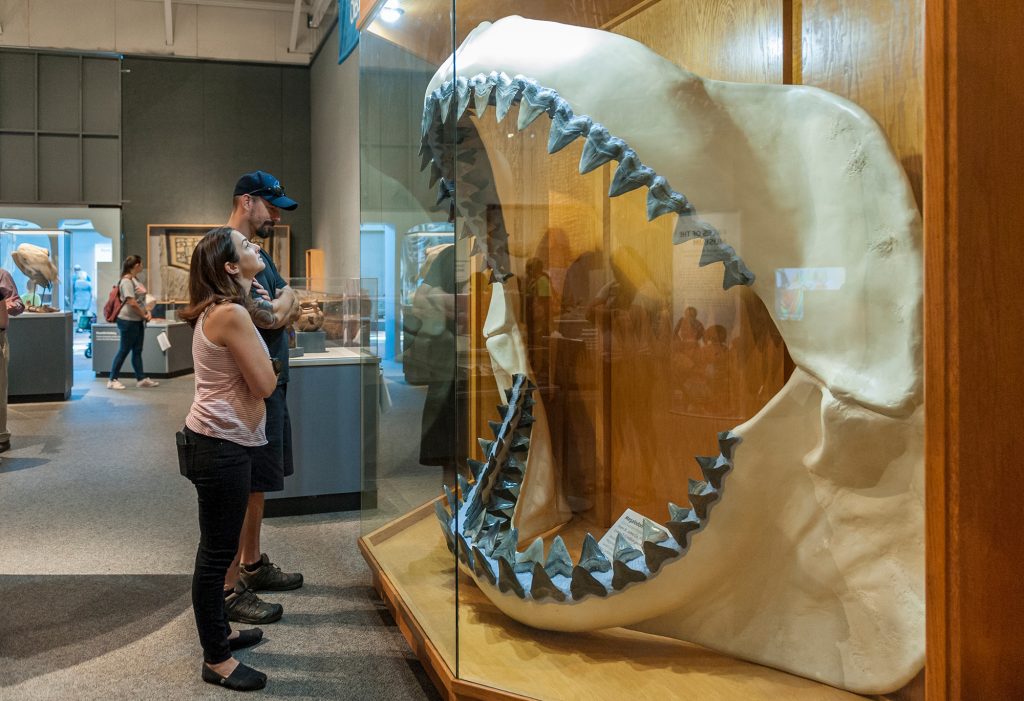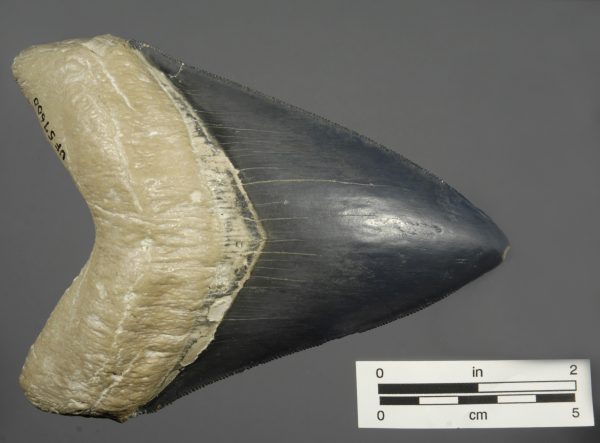Carcharocles megalodon, often just called megalodon, was the largest shark to ever live in our oceans. But what do we know about megalodon?
1: Megalodon went extinct about 2.6 million years ago.
Shark skeletons are made mostly of cartilage, but teeth and vertebrae of megalodon are widespread in the fossil record. This evidence shows they lived in our oceans from about 20 million years ago to about 3 million years ago. New estimates show them going extinct about 2.6 million years ago.
Despite the rumors and movies, scientists are sure the species Carcharocles megalodon is extinct.
2: Megalodon grew up to 60 feet long.
If we don’t have full fossil skeletons, how do we know how big megalodon was? Scientists who study modern sharks can look at a shark tooth and estimate fairly accurately how large that shark was based on shape and size, and shark-family information. They apply those same principles to fossil megalodon teeth and estimate that these large sharks grew up to 60 feet long!

Florida Museum photo by Kristen Grace
3: Megalodon was an important apex predator.
Because of their size and speed, and their powerful bite, megalodon sharks were capable of eating many different kinds of animals in ancient oceans. These large sharks probably preyed on whales and other marine mammals, giant turtles and seals.
In return, they might have faced competition from ancient sperm whales and killer whales. The fossil record shows that as megalodon populations declined, large predatory whales and smaller sharks filled their place in the food web and changed the ocean’s biodiversity.
4: There’s still a lot we don’t know about megalodon.
So far we’ve only found teeth and vertebrae of megalodons. Like other sharks, most of their skeleton is made from cartilage which doesn’t preserve well in the fossil record. There’s still lively debate in the scientific community about the modern species of sharks to which megalodon is most closely related.
Scientists who have been studying modern sharks are working with paleontologists to study megalodon and other long-extinct shark species. By asking questions about shark evolution, comparing fossils and modern specimens, and their environments, we can hopefully understand more about these amazing animals.

Florida Museum photo by Kurt Auffenberg
5: Megalodon teeth have been discovered at sites around the world.
That means you can find your own megalodon tooth! There are many areas around the world where it’s possible to find megalodon teeth, and Florida is one of those places.
But if you can’t go on a hunt for shark teeth, you can download and 3D print your own.
Learn more about the vertebrate paleontology collection at the Florida Museum.